Ever wondered exactly how those fantastic home espresso machines churn out a perfectly brewed, hot cup of coffee? Let’s help you understand the magic within the machine.
We will talk about how these machines work, how they brew, and the process coffee makers follow to deliver that rich, addictive aroma.
Lets us explore, in detail, how an espresso coffee machine works, visualizing the processes through comprehensive diagrams.
- What Principles Does an Espresso Machine Operate on – How an Espresso Coffee Machine Works
- How Does a Drip Coffee Maker Function?
- What are The Key Components of Espresso and Coffee Machines?
- What are The Steps to Making Coffee Using an Espresso Machine?
- What are The Common Issues and Their Solutions With Espresso Machines?
- FAQ
What Principles Does an Espresso Machine Operate on – How an Espresso Coffee Machine Works
At the heart of any espresso machine design, there are a few fundamental principles that the machines use.
These principles revolve around heat, pressure, and flow of water, which are crucial components of making coffee.
How Heat and Pressure Work in a Coffee Machine
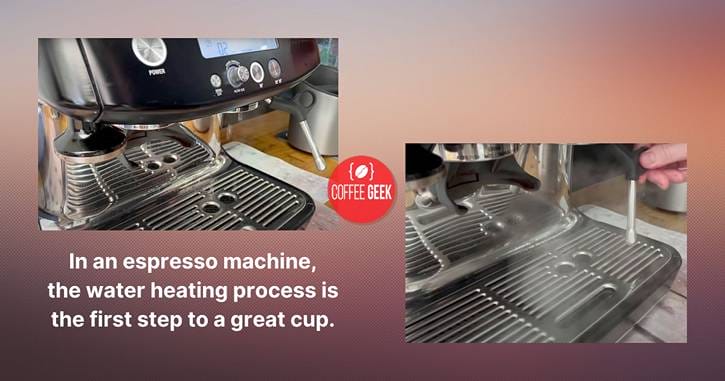
In an espresso machine, the water heating process is the first step to a great cup. The machine features a single boiler or heat exchanger that’s dedicated to heat the water.
The water is heated to a brew temperature that’s ideal for espresso. Once the water is sufficiently heated, it’s pressurized by the machine’s pump system and pushed through the finely ground in the portafilter.
The water source delivers the right amount of water through the machine, perfectly brewed to bring out the authentic flavor of espresso.
The Role of the Heating Element
The heating element within the machine is the real workhorse. The heat exchanger or coil is responsible for maintaining the water at the ideal temperature, as brew water temperature greatly influences your coffee flavor.
Besides heating, the heating element also helps in maintaining the water level in the boiler.
How Machines Brew Espresso
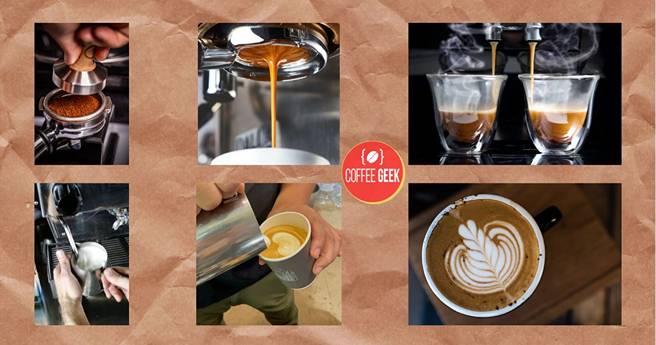
Espresso makers work their magic through a series of valves and features including the heat exchanger, one-way valve, aluminum water tube, and the portafilter.
The heated, pressured water from the reservoir hits the finely coffee ground put in the portafilter. The espresso brewer controls the time and pressure to extract a concentrated, flavorful cup of espresso.
How Does a Drip Coffee Maker Function?
Now that we have looked at espresso machines, let’s dive into the world of drip makers. An automatic drip coffee maker follows a similar principle; however, the brewing process is a bit different.
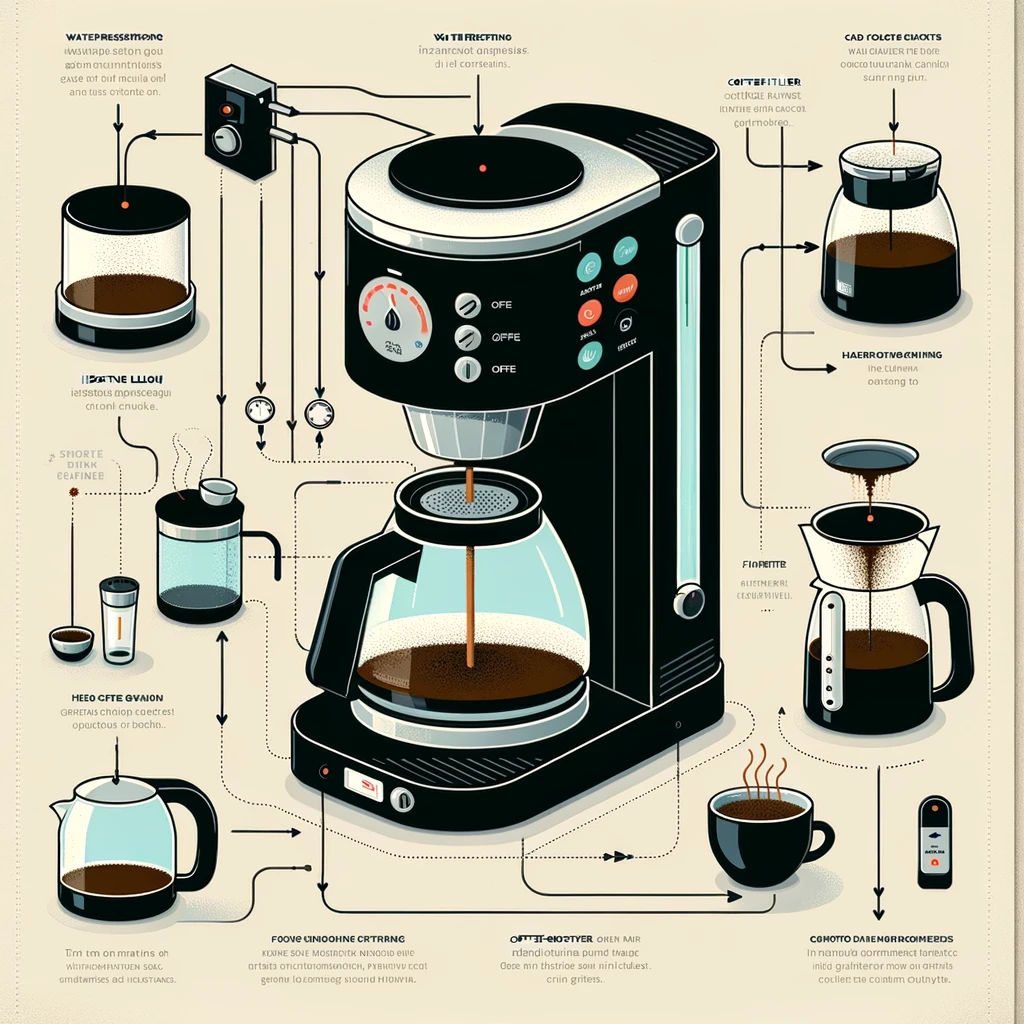
Brewing Process of Drip Makers
You put coffee in a filter basket and an amount of water in the reservoir. The water is heated within the machine and sprays over the coffee grounds in the filter basket.
The heated water then drips down through the coffee into the coffee pot, extracting flavors through the metal filter and resulting in a smooth, hot cup of coffee.
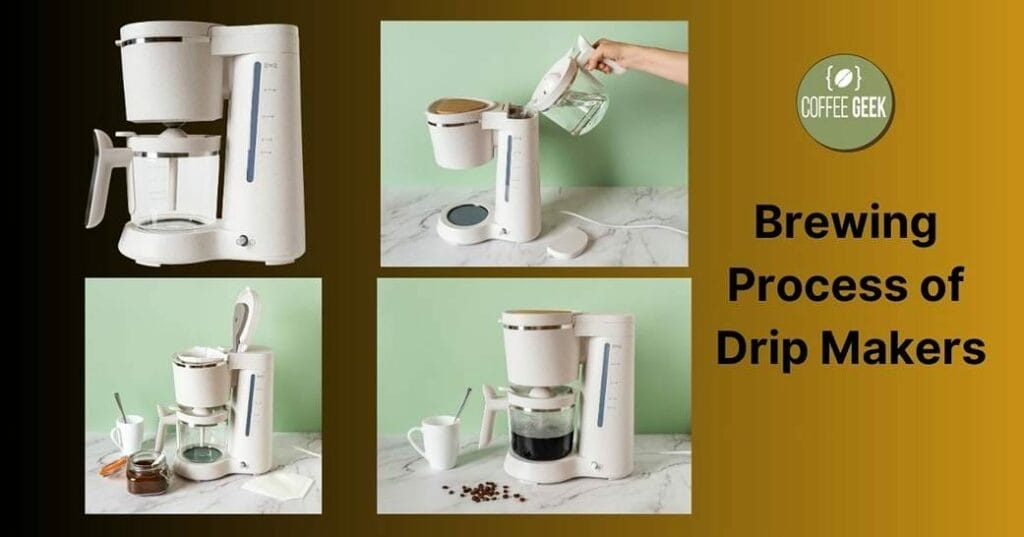
Heat Exchanger in Drip Coffee Maker
Like espresso machines, drip makers have an exchanger of a heat or heating coil as a crucial element. It heats the water to a precise temperature for the perfect brew.
This heating element ensures that the water temperature is sufficient enough for efficient extraction of flavor from the coffee grounds.
Water Flow in Drip Machines
Just like the vibratory pump in an espresso machine ensures the flow of water, a drip maker uses a one-way valve to allow water to flow freely from the reservoir.
The pressure difference, coupled with the heat, supports the flow of water, allowing it to be sprayed over the coffee grounds before it trickles down into the coffee pot.
What are The Key Components of Espresso and Coffee Machines?
Every coffee maker, whether it’s a high-end espresso machine or a traditional drip maker, boils down to a few fundamental components.
Let’s dive into some of the essential parts that make our morning ritual possible.

Understanding the Heat Exchanger and Coils
In both machine types, the heat exchanger plays a critical role.
Whether it’s a coil or a dedicated exchanger of heat, this element helps heat the water to the optimal brewing temperature and holds the water to maintain a consistent brew temperature.
The importance of the Portafilter and Filter Basket

The portafilter in espresso machines and the filter basket in drip machines act as the base for the coffee grounds.
As water is pushed or passed over the ground, these tools help to compress and spread the water evenly to ensure efficient brewing.
Identifying the Water Source and Reservoir
The water source and the reservoir are essential parts of the brewing process.
The reservoir holds the water before it’s heated, and the source ensures a consistent flow of water through the machine leading to a perfectly brewed espresso or smooth drip coffee.
| Component | Function |
|---|---|
| Water Reservoir | Stores water for brewing espresso. |
| Pump | Pressurizes water to create the necessary extraction pressure. |
| Boiler/Heating Element | Heats the water to the ideal brewing temperature. |
| Portafilter | Holds ground coffee and attaches to the machine. |
| Group Head | Connects the portafilter to the machine and channels hot water to the coffee grounds. |
| Coffee Grounds | Finely ground coffee beans for espresso brewing. |
| Tamper | Compresses coffee grounds evenly in the portafilter. |
| Brewing Process | Water is forced through the coffee grounds at high pressure. |
| Espresso Shot | The final product, a concentrated coffee with crema. |
| Steam Wand | Froths and steams milk for cappuccinos and lattes. |
| Drip Tray | Collects drips and spills, keeping the machine clean. |
| On/Off Switch | Controls the machine’s power. |
| Control Panel/Buttons | Allows users to customize shot volume, brew time, and other settings. |
| Cup Warmer | Keeps cups warm to maintain the coffee’s temperature. |
| Pressure Gauge | Displays the brewing pressure, ensuring it’s within the desired range. |
What are The Steps to Making Coffee Using an Espresso Machine?
Creating coffee using an espresso machine usually involves a few key steps. From the brew cycle to the control of temperature and pressure, it’s a fascinating journey of transformation.
The Brew Cycle: How Water Becomes Coffee
The brew cycle begins by adding water to the reservoir and then pushing it through the machine. With water in the boiler, heating elements heat the water to an ideal brewing temperature.
Once the water temperature is reached, the vibratory pump will pressure the water, pushing it through the finely ground coffee in the portafilter.
The brewing cycle ends when a concentrated shot of coffee comes out from the machine.
Regulating Brew Temperature and Pressure
Temperature and pressure regulation is critical when brewing a perfect espresso.
Correct brew temperature and pressure ensure that the water can extract all the necessary components from the coffee grounds, leading to a flavorful espresso shot.
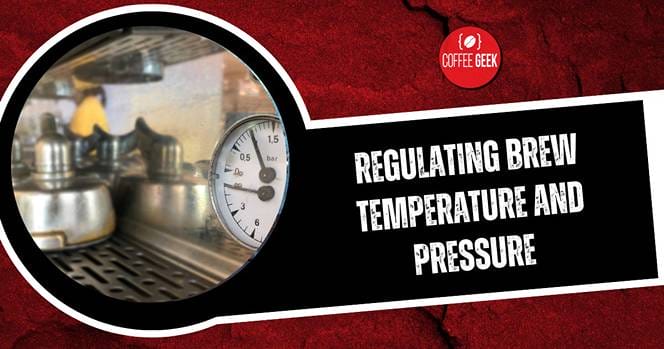
From Ground Coffee to Brew: Role of Tamping
Tamping is a critical step when making coffee with an espresso machine. It involves compacting the ground coffee evenly in the portafilter.
Tamp should ensure the pressurized water flows evenly through the coffee ground.
Tamping too hard or too soft can cause over or under extraction, respectively. Thus, appropriate tamping can significantly affect the taste of the coffee.
What are The Common Issues and Their Solutions With Espresso Machines?
Like any machine, espresso machines can experience a few issues. From overheating to problems with the water line, and issues with the brewing cycle, each can be addressed effectively.
Addressing Overheating and Control of Boiler Water
An espresso machine may overheat if the water in the heat exchanger or the coils is allowed to get too hot.
Overheating can also lead to excessive pressure buildup. Regularly checking the boiling water control system or the pressure relief valve can avoid overheating.
Problems with Water Line and Pressure (PSI)
Issues with water line can cause irregular flow of water, and improper PSI can lead to issues with pressure buildup within the machine. Regular maintenance and checks can ensure the water line and PSI balance remain in ideal condition.
Troubleshooting Brew Cycle and Water Flow Issues
The brew cycle can sometimes get disrupted due to various reasons like a blocked filter basket or a defective steam wand.
Similarly, water flow issues can occur due to a malfunctioning valve, disturbed PSI, or blockages in the water source.
Regular cleaning and replacement of defective parts can ensure smooth brewing and flow of water.
Knowing your coffee maker, whether an espresso machine or a drip coffee maker, can add a lot of value to your coffee-making process.
Understanding how machines work, from commercial machines to first espresso machines and coffee grinders, you become a part of the sacred process of coffee-making, making you appreciate your cup even more.
So let’s grab that cup and indulge in the wonderful world of coffee!
FAQ
How do heat and machines work together in the operation of a coffee maker?
In a coffee maker, heat and machine mechanics are crucial. When the coffee maker is switched on, the heating element inside the boiler heats the water.
As the water heats up, it begins to move through a tube in the machine, eventually reaching the point where the finely ground coffee is put. The heat also plays a crucial role in keeping the temperature at the grouphead optimal for making espresso.
Where does the water come from in a coffee maker?
The water comes from the water intake, typically located at the base of the coffee maker. Once you connect the water source and turn on the machine, it takes the water and heats it in the boiler.
How does the water move through the coffee maker?
Thanks to the heating element, when the water heats up, pressure within the boiler increases, which forces the water to move.
The water moves through a tube that lets the water out at the point where the coffee is held.
Why does the coffee maker need a heat element?
A coffee maker would not function without a heat element. This resistive heating element is simply a coiled wire, that generates heat when electricity flows through it.
This heat is necessary to bring the water to the ideal temperature, and it also creates the pressure needed to move water through the system.
What happens when water enters the group head?
Once the water enters the grouphead, it passes through the finely coffee ground that has been placed there.
The heat and pressure from the water extract the flavors from the coffee and carry it through the water spout into your cup of joe.
Can a coffee maker work without being full of water?
A coffee maker cannot function without being full of water or at least containing enough water to complete the brewing process.
The machine relies on the water in the boiler to heat up and create enough pressure to move water through the coffee.
How does a coffee maker heat water so quickly?
Coffee makers can heat water quickly due to the heating element and a tube inside the boiler. When electricity flows through the wire, it heats up, and the surrounding water in the boiler is thus heated.
This quick heating is what allows your cup of joe to be ready in no time.
What happens if the heating element gets damaged?
If the heating element gets damaged, the coffee maker would not function because there would be no way to heat the water.
The heating element is responsible for increasing the temperature of the water, creating pressure inside the boiler which then forces the water through the machine.
Can the heat of the water be adjusted?
Most coffee machines have an in-built feature that allows users to control and keep the heating element at a desirable temperature.
This-degree of control influences how hot the water gets, which can also affect the flavor of your coffee.
How does finely ground coffee help in making a perfect cup of coffee?
Finely ground coffee allows the hot water to extract more flavors.
When hot water passes through the finely ground coffee either in the hole, pressure forces the water to spend more time in contact with the coffee, which results in a flavorful cup of joe.

